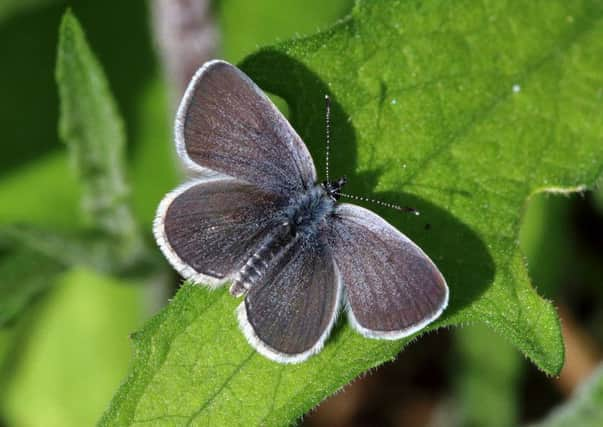Saving Scotland's smallest butterfly


The Small Blue is rare in Scotland and urgent conservation work is needed to help stabilise its population and provide the right habitat so it can spread to new areas.
A ‘Small Blue Butterfly Week’ has been organised by wildlife charity Butterfly Conservation Scotland in conjunction with the Tayside Biodiversity Action Group to run from 27 May until 4 June as part of a project to boost the butterfly’s numbers across Scotland.
Advertisement
Hide AdAdvertisement
Hide AdAction to help the butterfly is taking place in Angus, Aberdeenshire, Moray, Irvine, Caithness and the Borders. At almost all sites the Small Blue is only just hanging on, sometimes in colonies of a few tens of adults.
During Small Blue Butterfly Week, volunteers are being asked to help look for the adults and its eggs at known sites. Surveys will also take place to help identify any potential new breeding sites for the Small Blue.
Director of Butterfly Conservation Scotland, Paul Kirkland, said: “We are really thrilled at the enthusiasm for Small Blue Week and the work carried out between May 27 and 4 June will inform habitat management that will be carried out in the autumn by landowners and volunteers to help the butterfly.
“Many areas occupied by the Small Blue have shrunk in size, are surrounded by inhospitable habitat and are threatened by scrub encroachment, so it’s vital we do this work to secure the butterfly’s future.”
Advertisement
Hide AdAdvertisement
Hide AdThe Small Blue butterfly can be seen flying from mid-May to late June. Colonies are confined to small patches of grassland where Kidney Vetch grows - this is the only plant the caterpillars can eat.
Although the butterfly would formerly have occurred on farmland, modern agriculture rarely allows plants such as Kidney Vetch to thrive. In the recent past man-made ‘brownfield’ habitats such as limestone quarries and disused railways provided a good habitat but most have now scrubbed over or have been reclaimed for other uses.
Most colonies in Scotland are now found on sand dunes and other coastal grasslands and sand dunes, with only two or three inland sites remaining.
The Small Blue is much darker in appearance than Scotland’s most widespread blue butterfly, the Common Blue. In contrast, the upper wings of the Small Blue are almost black with a light dusting of blue scales.
If you would like to find out more about how you can help the Small Blue butterfly, email [email protected]